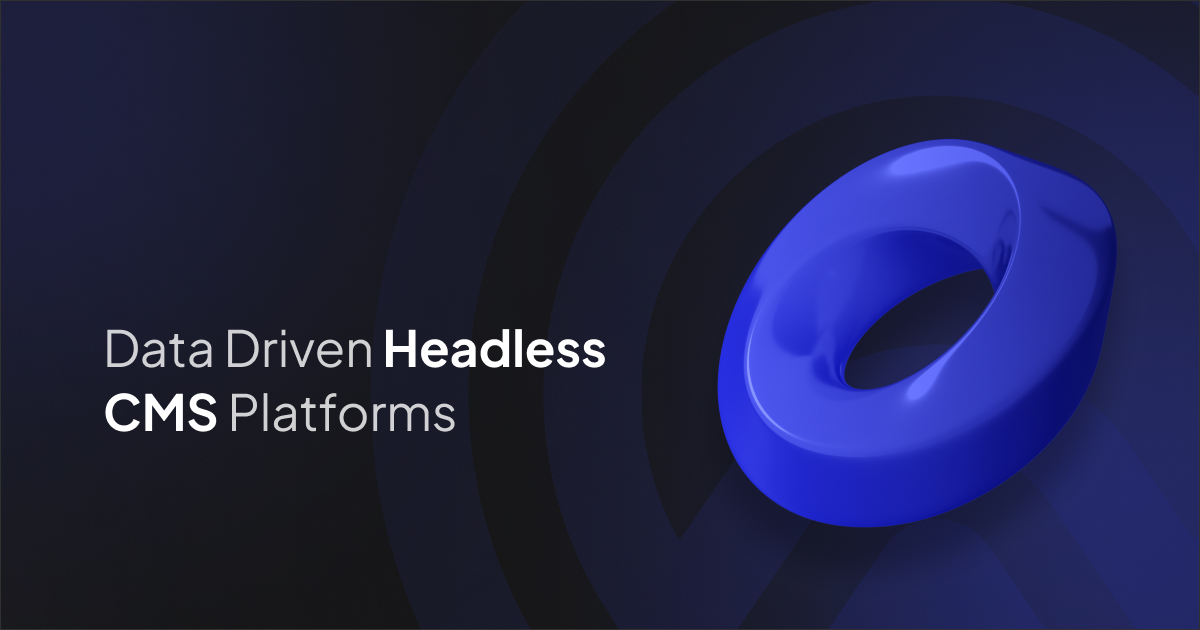When evaluating a data-driven headless CMS for the UK market, keep these factors in mind:
-
Embedded analytics & reporting Look for platforms that surface page-level metrics, content performance dashboards and real-time KPIs—without needing third-party integrations.
-
Personalisation & A/B testing Native support for user segmentation, geo-targeting and split-testing helps teams iterate quickly on UX and optimise conversion rates.
-
Data residency & GDPR compliance Ensure your CMS can store analytics data in UK/EU regions, provide audit logs, manage consent records and handle “right to be forgotten” workflows.
-
API performance & scalability High-throughput REST or GraphQL endpoints, CDN and edge-caching support ensure that data-driven features don’t slow down front-end delivery.
-
Integrations & extensibility Look for first-class connectors to BI tools (e.g. Power BI, Tableau), marketing automation platforms (e.g. HubSpot) and CRM systems (e.g. Salesforce).
-
Editorial UX An intuitive authoring interface with live previews, content scoring and SEO recommendations empowers non-technical teams to act on analytics insights.
Leading Data-Driven Headless CMS Platforms
1. Strapi Enterprise Edition
- Strengths: Built-in analytics plug-in, custom dashboard widgets and role-based access.
- Data features: Page performance reports, content-reuse metrics and SEO health checks.
- UK fit: Deploy on AWS London or Azure UK South; enterprise support for ISO 27001 and SOC 2.
2. Contentful (Custom Data Extensions)
- Strengths: Mature ecosystem with marketplace apps for Google Analytics, Segment and Optimizely.
- Data features: Live content preview with performance overlays; webhook-driven events feed BI pipelines.
- UK fit: EU-resident data storage, out-of-the-box GDPR tools for consent and data export.
3. Directus Insights Module
- Strengths: Database-first architecture that captures every API call; real-time dashboards in the admin UI.
- Data features: Customisable charts, user-journey tracers and A/B experiment trackers.
- UK fit: Self-host on Postgres in UK data centres; fine-grained permissions for public-sector use.
4. Kontent.ai Analytics
- Strengths: Fully managed SaaS with integrated content intelligence and editorial scoring.
- Data features: Content gap analysis, audience segmentation and predictive recommendations.
- UK fit: GDPR-ready compliance centre, British hosting options via partner networks.
5. Sanity with Studio Plugins
- Strengths: Highly extensible “Studio” UI where you can embed custom analytics components.
- Data features: Combine real-time metrics from BigQuery or Elasticsearch directly into your editorial workflows.
- UK fit: Deploy self-hosted Sanity in Kubernetes clusters on UK soil; enterprise support for data audits.
Practical UK-Centric Use Cases
E-commerce retailer, Manchester
Integrated Strapi’s analytics plug-in with Google BigQuery to track product page engagement. Insights drove a 15% uplift in add-to-basket rates by personalising recommendations to regional shopping trends.
Local council portal, Bristol
Deployed Directus Insights to monitor visitor journeys across multi-language pages. Automated GDPR data-export scripts ensure resident data exports within 24 hours of request.
Fintech SaaS, London
Used Contentful webhooks to stream editorial events into a Snowflake data warehouse. Business analysts now produce quarterly content-ROI reports without manual data wrangling.
Publishing house, Edinburgh
Embedded Sanity Studio dashboards to visualise subscriber churn and content popularity in real time. Editors use these metrics to plan feature articles and optimise subscription drives.
Conclusion
Data-driven headless CMS platforms are a strategic asset for UK businesses seeking to marry web development agility with actionable content insights. By selecting a solution with robust analytics, GDPR-aligned data handling and seamless integrations, you’ll unlock the power to iterate faster, engage audiences more deeply and make confident, evidence-based content decisions.
Ready to elevate your digital experiences? Begin by piloting one of these platforms in a controlled environment—set up your analytics dashboards, define success metrics and iterate based on real-time data. The next generation of content management is not just headless—it’s insight-powered.
Page Updated: 2025-08-04




















